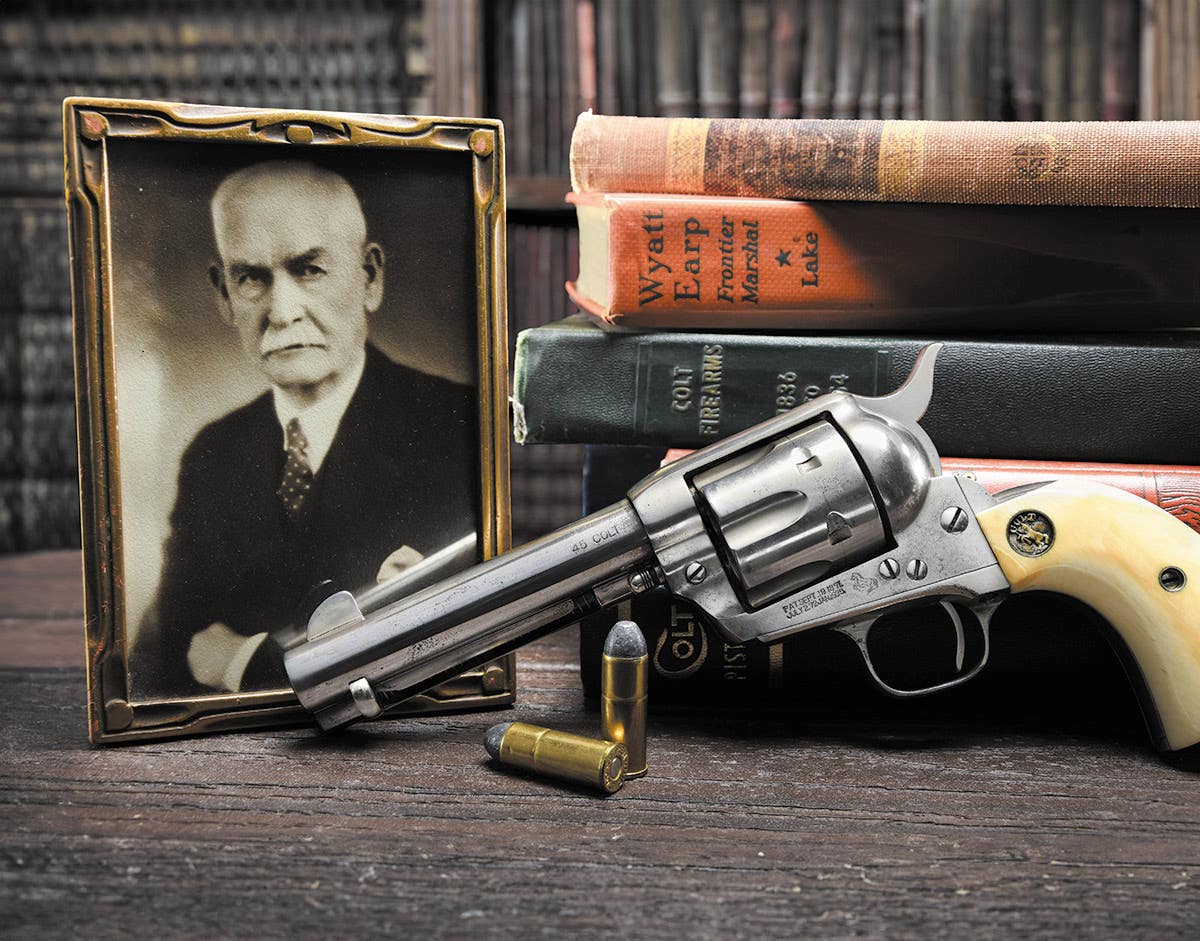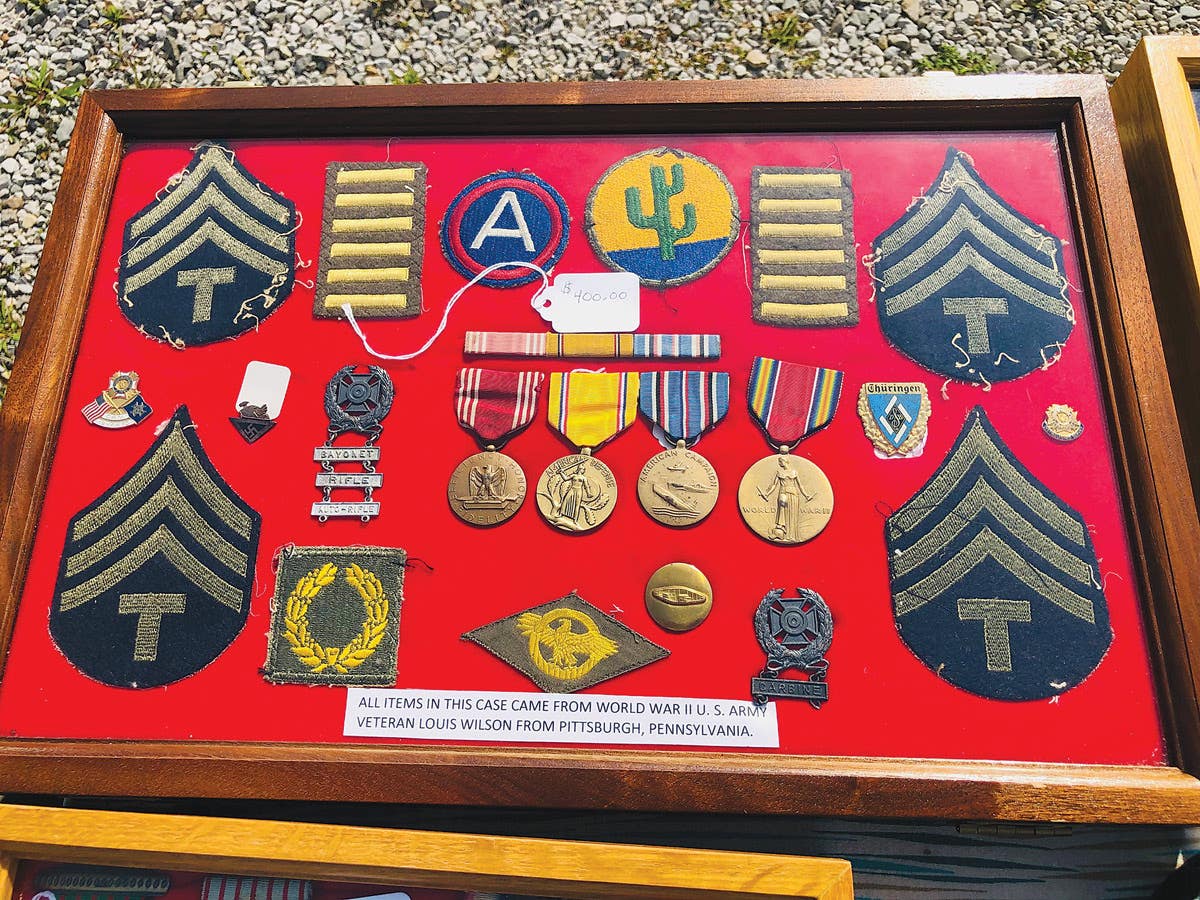Japanese WWII Army Enlisted Tunics
By the time the United States declared war on Japan in 1941, the Imperial Army was in the midst of major uniform change. During WWII, American GIs and Marines would face an opponent who utilized at least three different service tunics.
Type 5 Army Tunic
Known as the “5shiki Gun-i”, the Type 5 tunic strongly resembled the tunic that had been standard in the Japanese Army since it replaced the blue uniform in 1911. Made of a yellowish khaki (often referred to as “mustard”) wool for winter wear or cotton for summer, the Type 5 was essentially the same as the earlier Type 45 tunic. The most noticeable difference: no piping around the top of the cuff on the Type 5 tunic. This change was instituted in 1930 so, in addition to “Type 5,” the uniform tunic is often referred to as the “M90,” “2590,” or “Model 1930."
The tunic is recognizable from a standing collar with colored, swallow-tail collar tabs denoting branch of service and unit, rank insignia tabs on the shoulder seam usually secured by two small loops, scalloped breast pocket flaps and five buttons down the front. A variety of buttons were utilized, including brass, green-painted steel, bronze-plated steel, brown or green plastic, brown Bakelite or even green or brown-painted wood.
A belt support loop was located on the wearer’s left hip. Two vents in the skirt facilitated ease of movement.
The wool tunic (guni) featured a three-quarter, off-white cotton lining and two small pockets: one on the lower left skirt for the first-aid packet and the other on the left breast. Markings are usually found on the interior of the left breast.
The cotton tunic was constructed the same except that it was not lined and did not have the interior breast pocket. A white cotton tunic with green buttons was cut similar to the Type 5 and worn for fatigue duties.
Though production of the Type 5 ended in 1938, with the introduction of the Type 98 uniform, the Imperial Army continued to issue existing stocks of Type 5 uniforms and photographic evidence reveals the uniform was still worn at the end of the war.
Tropical Tunic
Prior to the outbreak of WWII, Japan issued the Bousyo-i, or tropical cotton uniforms, to troops stationed in the South Seas Mandate Islands. Initially, these uniforms were produced in tan or light khaki cotton, but by 1941, medium to dark green were commonplace.
Tropical tunics had open collars, buttoned side vent flaps below the armpits, pleated patch or internal pockets with flaps and patch pockets on the skirts without flaps. Later examples incorporated skirt pockets with buttonless flaps like those on the Type 98 tunic.
Type 98 Army Tunic
The first significant change in the Japanese Army’s tunic since the color change in 1912 came in 1938 with the adoption of the introduction of the 98shiki Gun-i, or “Type 98” tunic. Instead of a standing collar, the Type 98 tunic featured a stand-and-fall collar and four internal pockets, the top two with button, scalloped edges and the bottom two with non-buttoning straight flaps (some manufacturers did produce Type 98 tunics with only two breast pockets). The tunic still utilized five buttons down the front and one hook was provided for keeping the collar closed tightly around the wearer’s neck.
Instead of rank insignia on the shoulders like on the Type 5 tunic, the Type 98 featured a new style of collar patch to indicate rank. The Type 98 tunic eliminated any indication of branch of service or unit affiliation. In fact, soldiers who continued to wear the Type 5 tunics 1938, were instructed to remove the colored unit patches from the collars.
READ MORE: INDENTIFY THE RANK ON YOUR TYPE 98 TUNIC
Like its predecessor, the Type 98 tunic featured a single belt loop on the lower left back and vents on each hip. Similarly, the tunic was three-quartered lined with white cotton with an interior left breast pocket and a first-aid packet pocket. Markings were stamped inside the left breast in black ink.
The khaki- or olive-colored cotton tunic was cut like the wool version but was not lined and did not have an interior breast pocket. Underarm vents that were each secured with a single button were a feature unique to the summer weight tunic.
Type 3 Army Tunic
In 1943, the Imperial Army introduced the 3shiki Gun-i, or Type 3 uniform. Essentially cut the same as the Type 98, the Type 3 tunic can be distinguished from the lower quality of materials used in their manufacture.
The wool used for the winter tunic was generally coarser and darker than that used for the Type 98. Furthermore, the lining of the Type 3 varied in color and material. It is not uncommon to find Type 3 tunics lined with green, blue or black synthetics. Some very late production Type 3 tunics were issued without any lining. Buttons were usually brown or beige plastic, though some early production Type 3 tunics have been found with green-painted metal buttons.
The cotton version of the Type 3 was the same as the cotton Type 98 except for the buttons. Generally, the Type 3 tunics were fitted with plastic or wood buttons.
Kesenfuku “Last-Ditch” Tunic
With expectations that the war might actually come to the shores of Japan, the Imperial Army began producing kesenfuku, or “home front” uniforms in 1945. The waist-length jacket had two slash breast pockets with pointed flaps and buttons, a stand-and-fall collar and reinforced elbows. Though the pattern omitted pockets in the waist, it did retain the belt support strap on the left rear waist. Because manufacturers used cheaper materials, many variations in cloth and color exist. Buttons on kesenfuku were often made of wood, tin or even baked clay. Both wool and lightweight cotton versions were produced.
You may also like:
*As an Amazon Associate, Military Trader / Military Vehicles earns from qualifying purchases.








